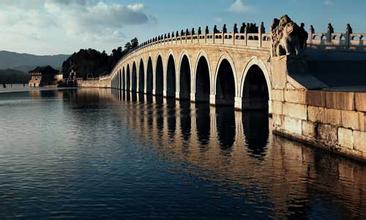Jin Dynasty
金朝
Culture
文化
The Jin rulers adopted a positive attitude towards the Han culture.
金朝的统治者对于汉文化采取了一种正面的态度。
Chinese, Khitan and Jurchen script were used simultaneously, although later, the Khitan script was abolished so as to encourage the popular use of Chinese calligraphy.
汉文、契丹文和女真文被同时使用,尽管在之后为了鼓励对于中文书法的使用,契丹文字被禁止了。
Emperor Zhangzong became a keen collector of books written in Chinese which did much to promote cultural development.
金长宗成为了收集汉文书籍的爱好者,这对于加强文化发展大有好处。
Many writers emerged during this period and one named Yuan Haowen was especially eminent in the fields of poetry, prose and treatise.
这个时期出现了许多作家,在诗词、散文和论著领域最杰出的人叫做元好问。
His work is representative of the highest literary achievements of the Jin.
他的著作代表了金朝时期文学的最高成就。
The Jin Dynasty made an important contribution to the field of art.
金朝对艺术做出了重要贡献。

They had inherited the characteristics of Liao architecture and absorbed that of the Song.
他们继承了辽朝建筑的特点又吸取了宋朝的风格。
One of the finest examples of their architecture is the Lugou Bridge.
金朝建筑最杰出的代表是卢沟桥。
Completed between 1188 and 1192, it is the oldest existing multi-arched stone bridge in the Beijing area.
卢沟桥建于1188年1192年间,是北京地区现存最古老的连拱石桥。
The exquisite sculptures on the bridge and its ornamental columns demonstrate a practical application of the aesthetic principles of unity and variation which are a great attraction to this day.
桥上精致的雕刻和装饰性的石柱表现了对于结合与变化的审美原则的实际运用,直到今日卢沟桥仍然是一个奇景。











